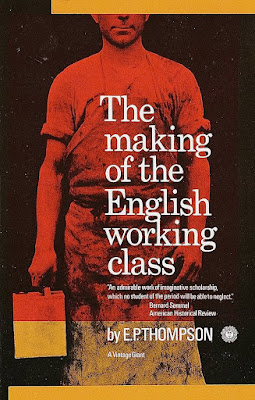
Introduction:
"The Making of the English Working Class" by E.P. Thompson is a groundbreaking work that explores the emergence and development of the working class in England during the late 18th and early 19th centuries. Published in 1963, this influential book provides a comprehensive analysis of the socio-economic and political factors that shaped the working class and its struggle for rights and recognition. In this blog article, we will delve into the key themes and arguments presented in Thompson's seminal work.
1. Context and Background:
Thompson begins by setting the historical context of the working class, examining the transition from feudalism to capitalism in England. He explores the impact of industrialization, enclosure acts, and the commodification of labor, which led to the formation of a distinct working class.
2. Agency and Resistance:
Thompson emphasizes the agency of the working class, challenging the prevailing view of workers as passive victims of industrialization. He highlights the various forms of resistance employed by workers, such as Luddism, strikes, and the formation of trade unions. These acts of resistance were crucial in shaping the working class identity and fostering a sense of solidarity among its members.
3. Culture and Community:
One of the central arguments in Thompson's book is the significance of culture and community in the making of the working class. He explores the role of non-economic factors, including religion, popular traditions, and shared experiences, in shaping the class consciousness and collective identity of workers.
4. Class Formation and Class Consciousness:
Thompson provides a detailed analysis of how the working class was formed and how its consciousness developed over time. He examines the process of class formation through interactions within workplaces, neighborhoods, and political organizations. By exploring the impact of political movements like Chartism and radical ideologies, Thompson sheds light on the evolution of class consciousness among the working class.
5. Gender and Family:
In addition to class dynamics, Thompson delves into the gendered experiences of working-class men and women. He examines the role of women within the family and the community, highlighting the unique challenges they faced and their contributions to the working-class struggle. Thompson's analysis challenges traditional narratives that often overlook the experiences and agency of working-class women.
6. Legacy and Historiography:
Towards the end of the book, Thompson reflects on the legacy of the working-class movement and its impact on subsequent generations. He also critiques existing historiography, arguing for a more nuanced understanding of the working class and a departure from reductionist Marxist interpretations.
Conclusion:
"The Making of the English Working Class" by E.P. Thompson is a seminal work that revolutionized the field of social history. Thompson's meticulous research and nuanced analysis provide a comprehensive understanding of the historical context, agency, and culture that shaped the working class in England. By highlighting the contributions and struggles of the working class, Thompson challenges prevailing narratives and ensures their rightful place in history. This book remains essential reading for anyone interested in the social, economic, and political history of England and the formation of the working class.
